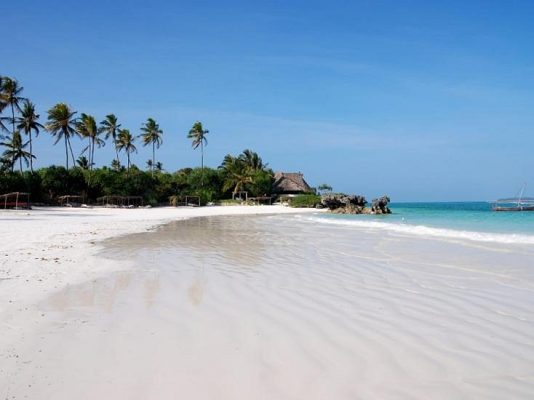Spice Tour
The Spice Tour is a fascinating half-day experience that takes you through vibrant villages and lush spice plantations. This guided walking tour immerses visitors in the world of exotic spices, offering a hands-on exploration of their origins. Along the way, you’ll encounter workers skillfully climbing trees, cutting barks, and harvesting spices with traditional techniques, creating an engaging and sensory experience.
As you walk through the farms, you’ll see, touch, and taste a variety of spices such as cloves, cinnamon, cardamom, and nutmeg. Guides share intriguing stories about the spices’ uses in cooking, medicine, and rituals, enriching your understanding of their cultural significance. The interactive aspect of identifying spices by their scents and flavors adds an exciting challenge to the tour.
The Spice Tour is also an excellent opportunity for shopping. The farms provide fresh, high-quality spices, allowing visitors to purchase directly from the source. It’s the perfect way to bring the aroma and essence of this unique experience home with you.
City Tour
The City Tour of Stone Town is a captivating walking exploration of Zanzibar’s historic heart, where time seems to pause. This journey offers an intimate glimpse into the island’s rich past and vibrant culture. Key highlights include the House of Wonders, an iconic building showcasing Zanzibar’s heritage; the former slave market, a haunting reminder of East Africa’s slave trade history; and the Arab Fort, a fortress steeped in Omani history. These landmarks reflect the island’s unique blend of African, Arabic, Indian, and European influences.
As you navigate Stone Town’s bustling market, you’ll experience its energetic atmosphere filled with colorful stalls offering fresh produce, spices, and handcrafted goods. The narrow, winding alleyways lead to architectural marvels like ornately carved wooden doors, studded with brass and rich with symbolism. Two magnificent cathedrals stand alongside countless mosques, exemplifying Zanzibar’s religious diversity and historical significance as a melting pot of cultures.
The tour also includes opportunities to shop at Stone Town’s artisan boutiques. Here, you’ll find an array of souvenirs, from handwoven textiles to intricate jewelry, perfect for bringing a piece of Zanzibar’s charm home. This tour is a sensory delight and an enriching dive into the essence of Zanzibar’s storied past and cultural vibrancy.
Jozani Forest Tour (Half-Day Tour)
The Jozani Forest is a lush sanctuary and the only national park in Zanzibar, home to the rare red colobus monkeys, a species endemic to the island. This guided tour offers an immersive experience, with well-maintained pathways weaving through dense vegetation, mangroves, and rich biodiversity. Along the way, you’ll encounter these playful monkeys, known for their vibrant coats and distinctive behavior, offering fantastic photo opportunities as they swing gracefully through the trees.
The red colobus monkeys, once critically endangered, have seen their numbers increase to an estimated 2,000–2,500 due to dedicated conservation efforts. These initiatives, led by the nature reserve in collaboration with local communities, have created a harmonious environment for both humans and wildlife. Visitors can observe the monkeys at close range, as they remain unperturbed by human presence, going about their natural activities as if undisturbed.
The forest is also a haven for nature enthusiasts, offering sightings of exotic flora and other wildlife, including bush babies, duikers, and a variety of bird species. Guided by knowledgeable naturalists, this tour enriches your understanding of Zanzibar’s unique ecosystem, making it a must-visit destination for those seeking a connection with nature and a glimpse into successful conservation in action.
Prison Island Tour (Half-Day Tour)
Prison Island, also known as Changuu Island, is a short boat ride from Stone Town and offers a fascinating blend of history and natural beauty. Originally intended as a detention center for rebellious slaves in the 19th century, the island later became a quarantine station for those suffering from yellow fever. Today, it is renowned as the sanctuary of Zanzibar’s Giant Aldabran Tortoise colony, with some tortoises surpassing a remarkable age of 100 years.
Upon arrival, visitors are greeted by these gentle giants, who are eager to be fed and petted. The experience of interacting with the tortoises, some weighing over 200 kilograms, is both memorable and educational. Beyond the tortoise sanctuary, a walk through the island’s forested interior reveals an array of birdlife, including the vibrant and elegant peacocks that add to the island’s charm.
Surrounded by a stunning coral reef, the island is a haven for snorkeling enthusiasts, offering the chance to explore colorful marine life. The pristine white sandy beaches provide the perfect setting for relaxation, making this half-day tour an excellent mix of wildlife, history, and recreation, ideal for all types of travelers.
Dolphin Tour (Full-Day Tour)
The Dolphin Tour in Zanzibar is a captivating experience that offers close encounters with some of the ocean’s most intelligent creatures. The journey begins in Kizimkazi Village, located on the southern coast of the island, known for its resident bottlenose dolphins and the occasional appearance of shy humpback dolphins. Bottlenose dolphins are frequently spotted year-round, while humpback sightings, though less predictable, add an exciting element to the trip.
The best time for the tour is early morning, as the cooler sea temperatures keep dolphins closer to the surface. As the sun rises and the waters warm, dolphins retreat to the depths to escape the heat. To maximize the experience, pickups for participants staying in Stone Town hotels are arranged at 6:00 AM, while beach hotel pickups begin as early as 5:00 AM. This ensures visitors get to the location when dolphin activity is at its peak.
The tour includes private guided trips and transfers, designed to enhance guest comfort and flexibility. Participants can enjoy a serene boat ride, spotting dolphins in their natural habitat, and for those who are adventurous, there is an opportunity to swim alongside these playful creatures. This unforgettable experience combines natural beauty, wildlife interaction, and local hospitality to create a day of pure magic on the water.
Safari Blue Tour (Full-Day Tour)
The Safari Blue Tour begins in the charming village of Fumba, an ideal gateway to the stunning Menai Bay Conservation Area. Known for its vibrant wildlife, secluded sandbanks, and rugged island landscapes, the tour offers an unparalleled exploration of Zanzibar’s natural beauty. Guests are taken on an adventure that includes spotting dolphins, lounging on pristine sandbanks, and exploring colorful coral reefs teeming with tropical marine life.
The day begins with a visit to a picturesque sandbank, where visitors can relax, swim, or snorkel. High-quality snorkeling equipment is provided, and experienced guides are available to ensure participants enjoy the thriving coral reefs. For beginners, step-by-step instructions make the experience enjoyable and safe. Fresh coconuts and local snacks are served throughout, adding a refreshing touch to the excursion. The crystal-clear waters and abundance of sea life make this a snorkeling paradise.
Lunch is a highlight, featuring a delectable Zanzibari seafood feast, including freshly grilled fish, slipper lobster, and other local delicacies. To cap off the day, participants join the crew aboard an ngalawa, a traditional outrigger canoe carved from mango wood, for a memorable sailing experience. The combination of culture, cuisine, and nature makes the Safari Blue Tour an unforgettable journey through Zanzibar’s coastal wonders.
 Over the years, it has become one of the most popular tourist destinations in East Africa, attracting travelers from across the globe. The archipelago consists of two main islands, Unguja (commonly referred to as Zanzibar Island) and Pemba, along with several smaller islets. The island’s name alone evokes a sense of adventure, exoticism, and mystery, making it an alluring destination for many.
Over the years, it has become one of the most popular tourist destinations in East Africa, attracting travelers from across the globe. The archipelago consists of two main islands, Unguja (commonly referred to as Zanzibar Island) and Pemba, along with several smaller islets. The island’s name alone evokes a sense of adventure, exoticism, and mystery, making it an alluring destination for many.